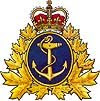
This afternoon, we received this e-mail in our Inbox. It is a very interesting one, in that we have a person who is an absolute neophyte to the world of boating, yet who knows that he does not know enough, for what he wants to do...
He has had the presence of mind to actually write us and ask what he should know/learn/do in order to buy this boat and sail it across the ocean blue.
"Good morning Sir or Madam or Miss!
I planned to buy a 34' yawl in Ontario to sail across the ocean via Israel etc. Its registered under the name ********* in Pennatanguisheen at the Dutch Man Cove, its owner is *** * ******* if that helps in anyway.
I dont know zip about those things which is why I rely on your experience.Someone told me you cant do that, you need to have a captain license or something, is this true and where do i have to go to get one and other info on that aspect.
Do I have to take a course and where and how long and hum how much?
Maybe you got pointers you can direct me along.
Silly me I thought you could just buy a boat and sail on, so please advise me on that before I go and buy it over the week end.
Thanks for you help! Have a great day or laugh about my inexperience."
*****************************
Now, far be it from me to laugh about a person's lack of experience. I will enjoy hours of laughs from a person's willfull stupidity or arrogance, yes. But I won't laugh at a person simply because he doesn't know something. That's when the teacher in me comes out. If someone is actually looking to learn, I will be the first one to volunteer to help, assuming that I might know a little more than the person I'm teaching. I can't teach what I myself don't know...
So, giving it an honest effort, I replied with the following:
"Thank you for your email dated 18 February 2010, requesting information on considerations for a trans-Atlantic crossing in a 34' pleasure craft.
Such an undertaking would demand that you have considerable skill and experience in boat handling, as well as navigation skills, both electronic and manual, selection and storage of food stuffs, water supplies, etc.... Training for such necessary skills is available through dozens of private training institutions across Canada, many of which you will find listed in the pages of your local phone book or online.
Your first order of business will be to have the vessel's registration transferred into your name.
Transport Canada's Vessel Registration program carries out the following activities:
Transport Canada's Vessel Registration program carries out the following activities:
- issues registration and completes transfers of ownership for pleasure craft, for small commercial vessels of 15 gross tons or less, such as passenger, cargo and fishing vessels, and for larger commercial ships
- maintains the Canadian Register of Ships and the Small Vessel Register, which include vessel names, ownership information and records of all registered vessels for each port of registry in Canada
- appoints tonnage measurers responsible for issuing Certificates of Survey and provides contact information for them
- registers marine mortgages
- registers vessels under construction
Please contact the Vessel Registration program for additional information.
Vessel Registration
Vessel Registration
Place de Ville, Tower C, 10th Floor
330 Sparks Street
Ottawa, ON K1A 0N8
Tel.: 1-877-242-8770 Hours vary Officers available 24/7 Telemessage
Fax: 613-998-0637 (Ottawa)
E-mail: oep-epe@tc.gc.ca
Information on the Vessel Registration program is available at the following URL:
www.tc.gc.ca/marinesafety/oep/vesselreg/menu.htm
www.tc.gc.ca/marinesafety/oep/vesselreg/menu.htm
Transport Canada's Office of Boating Safety provides information on the rules and regulations pertaining to the conduct of pleasure craft in Canadian waters. They would also provide information on the Minimum Safety Equipment Requirements for a vessel of this length:
The Office of Boating Safety provides information on the minimum safety equipment required aboard pleasure craft over 8 metres (26 feet 3 inches) in length but not over 12 metres (39 feet 4 inches) in length.
The Office of Boating Safety provides information on the minimum safety equipment required aboard pleasure craft over 8 metres (26 feet 3 inches) in length but not over 12 metres (39 feet 4 inches) in length.
These pleasure craft, both motorized and non-motorized, must carry the following equipment:
PERSONAL PROTECTION EQUIPMENT
- one Canadian-approved personal flotation device or lifejacket of appropriate size for each person on board
- one buoyant heaving line of no less than 15 m in length
- one approved lifebuoy with an outside diameter of 610 mm or 762 mm that is attached to a buoyant line of no less than 15 m in length
- a reboarding device if the freeboard of the vessel is greater than 0.5 mBOAT
SAFETY EQUIPMENT
- an anchor attached to a cable, rope or chain or any combination of these of no less than 30 m
- one bailer
- one manual water pump fitted with or accompanied by a hose long enough to pump water over the side of the vessel
- one Class 10BC fire extinguisher, if the pleasure craft is a power-driven vessel, plus another class 10BC fire extinguisher if the pleasure craft is equipped with a fuel-burning cooking, heating or refrigerating appliance
DISTRESS EQUIPMENT
- a watertight flashlight
- twelve Canadian-approved flares of type A, B, C or D (no more than six of which are of type D)
Exception: The flares are not mandatory if the craft is operating in a river, canal or lake in which it can at no time be more than one nautical mile (1.852 km) from shore, or if the craft is taking part in an official competition or in the final preparation for an official competition and has no sleeping arrangements.
NAVIGATION EQUIPMENT
- a sound signalling device or appliance
- navigation lights that meet the standards set out in the Collision Regulations
Power-driven pleasure craft measuring more than 8 metres (26 feet 3 inches) in length are required to be equipped with a properly adjusted compass. If the craft is operating more than 20 nautical miles (37 km) from shore, a compass bearing device is required.
Remember that these are the bare minimum safety equipment requirements. For an undertaking such as yours, where you may routinely expect to encounter seas and swells the size of a 5-storey building, you may very well want to bring extra equipment.
Please contact Transport Canada's Office of Boating Safety for additional information.
Office of Boating Safety
Please contact Transport Canada's Office of Boating Safety for additional information.
Office of Boating Safety
100 Front Street S
Sarnia, ON N7T 2M4
Tel.: 1-800-267-6687 8 a.m. - 5 p.m. Eastern Time Boating Safety Information Service
Fax: 519-383-1989 (Sarnia)
E-mail: obs-bsn@tc.gc.ca
Information on the Office of Boating Safety is available at the following URL:
www.tc.gc.ca/marinesafety/debs/obs/menu.htm
Information on the Office of Boating Safety is available at the following URL:
www.tc.gc.ca/marinesafety/debs/obs/menu.htm
A vessel of this size should normally have, if not a complete navigational suite, then at the very least a marine VHF radio.
Those who operate a pleasure craft with a fixed or portable VHF marine radio or other marine radio are required by law to have a Restricted Operator's Certificate (Maritime).The Canadian Power and Sail Squadrons (CPS) is a private non-profit organization that has been mandated to administrate the Restricted Operator's Certificate (Maritime) program and issue the Certificate on behalf of Industry Canada.
The Canadian Power and Sail Squadrons' Restricted Operator's Certificate (Maritime) program provides VHF marine radio operation training to individuals, administers the related certification examination and issues the Restricted Operator's Certificate (Maritime) to those who pass the examination.
The training includes maritime radio course manuals, interactive CD-ROMs and seminars designed to help individuals prepare for the examination. It also covers all aspects of the Global Maritime Distress and Safety System, as well as the operation of and requirements for digital selective calling systems.
Please contact the Canadian Power and Sail Squadrons for additional information.
Restricted Operator's Certificate (Maritime)
Restricted Operator's Certificate (Maritime)
26 Golden Gate Court
Toronto, ON M1P 3A5
Tel.: 1-888-277-2628 8:30 a.m. - 4:30 p.m. Eastern Time
Fax: 416-293-2445 (Toronto)
E-mail: hqg@cps-ecp.ca
Information on the Restricted Operator's Certificate (Maritime) is available at the following URL:
http://www.cps-ecp.ca/
Information on the Restricted Operator's Certificate (Maritime) is available at the following URL:
http://www.cps-ecp.ca/
Given the distance you intend to cover, you may well want to consider the purchase of an HF or MF radio as well, given the rather limited range of a VHF marine radio.
You may also want to think about installing an EPIRB on your vessel. An EPIRB is an emergency position-indicating radio beacon. It is a maritime distress-alerting transmitter used aboard ships.
You may also want to think about installing an EPIRB on your vessel. An EPIRB is an emergency position-indicating radio beacon. It is a maritime distress-alerting transmitter used aboard ships.
The Department of National Defence's Canadian Beacon Registry program registers the following types of distress-alerting transmitters in a centralized database:
- personal locator beacons (PLBs)
- emergency locator transmitters (ELTs)
- emergency position-indicating radio beacons (EPIRBs)
The Registry provides information on persons, ships and aircraft that are connected to a registered beacon to the Canadian Mission Control Centre and Rescue Coordination Centres during search and rescue operations.Beacon registration is mandatory.
Please contact the Canadian Beacon Registry for additional information.
Canadian Beacon Registry
Please contact the Canadian Beacon Registry for additional information.
Canadian Beacon Registry
CFB Trenton,
P.O. Box 1000 STN FORCES
Astra, ON K0K 3W0
Tel.: 1-877-406-7671 8:30 a.m. - 4:30 p.m. Eastern Time 24/7 Telemessage
Fax: 1-877-406-3298
E-mail: CBR@sarnet.dnd.ca
Please do not hesitate to contact us should you require additional information.
Sincerely,
Us."
I do love it when people use our services for all the right reasons. :)
















1 comment:
A truly happy person is one who can enjoy the scenery on a detour..............................................
Post a Comment